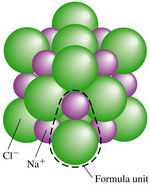|
Salt – The First Universal Seasoning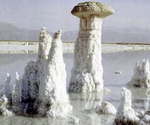
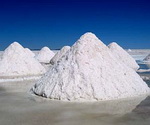
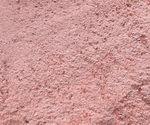
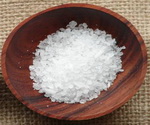
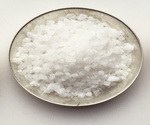
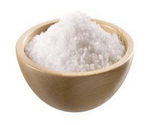
Salt is not a spice, but a chemical compound NaCl, sodium chloride, element number 11 on the periodic table. This compound is essential to life, and it acts on the body by maintaining the balance of body fluids, a balance that is so critical that dehydration if it becomes too severe can lead to death. This precious compound keeps the fluid level in the body in equilibrium to help prevent dehydration. The amount that the adult human body needs is said to only be 6-8 grams a day, but the amount of this compound that is found in the diet is well above the amount required and can thus lead to health problems. Salt was probably the world’s first seasoning and one of the fundamental tastes along with sweet, sour and bitter, and due to its overuse is probably the most abused seasoning.
Origin The origin of salt is the sea but just how the chemical compound got into the sea is the question, whether it was through erosion of rocks over millions of years and ended up in the sea or was a compound already in the sea as underground deposits. One of the best known sea deposits is the Dead Sea, some of the best known mines are the Wieliczka Mine in Poland, the mines near Salzburg, Austria; and the Bonneville Flats in Utah. The current source of the seasoning is underground deposits that are mined and evaporation from seawater. There are two types called rock and sea, with varying textures from coarse to finely grained. History The seasoning has been gathered (called winning) and been used since the dawn of the human race. The seasoning has also been used as a form of money. There are over 300 mentions of the seasoning in the Bible. The main sources of the seasoning in ancient times were from the dry coastal areas along the Mediterranean, and with trade routes in Egypt, Greece, Italy, and Spain. Caravan trade routes were developed to transport the seasoning to Markets that were established in cities such as Genoa, Pisa and Venice. Buying/Storage The sea form typically has traces of minerals such as iron, magnesium, calcium, potassium, manganese, iodine, and zinc. The table variety usually comes from mines and is purified until it is pure sodium chloride and enhanced with iodine. The Kosher form generally comes in large, irregular crystals and is used in Jewish cuisine. The black variety of the seasoning contrary to its name is sold as large chunky dark purple to red pieces or ground into a fine pink powder, has an aroma of sulfur and is generally used in Indian cooking. The seasoning especially in the table form can be stored indefinitely. Use One common use of the seasoning was food preservation and is still commonly used to marinade meats in a short curing process, and as a common seasoning for just about any food, but the seasoning should be used in moderation since it can cause health problems for some.
For some great sections on herbs and spices some great references are: • The Spice and Herb Bible – Second Edition by Ian Hemphill with recipes by Kate Hemphill • The Food Encyclopedia by Jacques L. Rolland and Carol Sherman with other contributors • Field Guide to Herbs & Spices by Aliza Green • The Contemporary Encyclopedia of Herbs & Spices – Seasonings For The Global Kitchen by Tony Hill
Cooking Basics
|
Salt the universal seasoning - chemical compound NaCl

